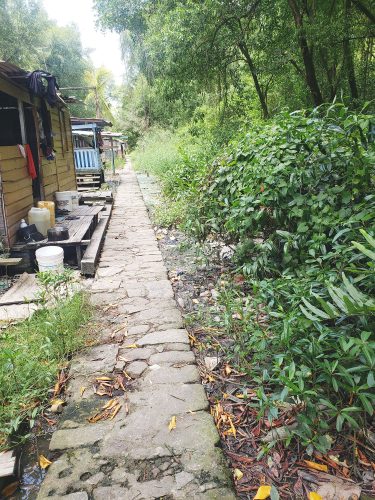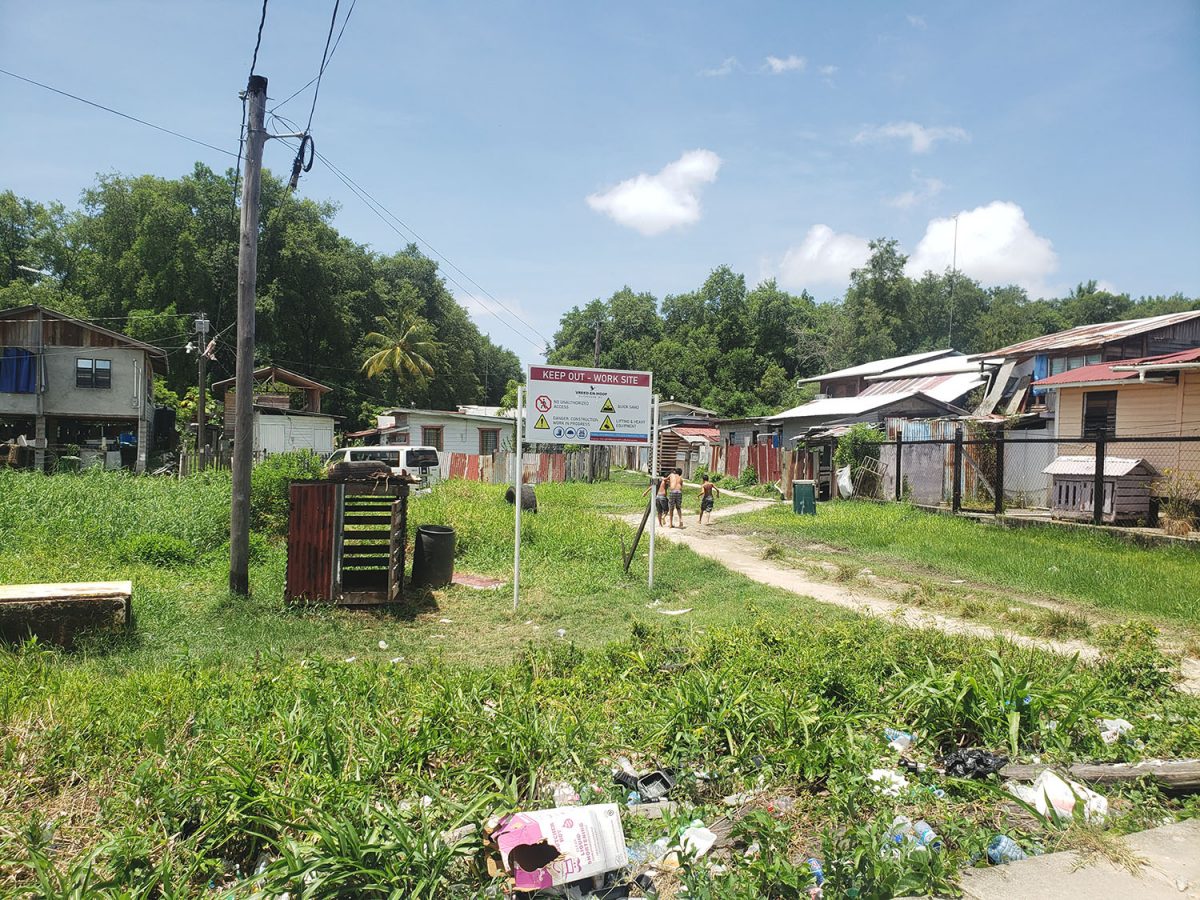The depressed community of Plastic City, located on the foreshore of Vreed-en-Hoop, West Demerara, has been earmarked to be regularised, according to Minister of Housing and Water Collin Croal, pending his decision on relocation or settlement. However, residents are sceptical.
When Stabroek News visited the community, residents said that a team who claimed to represent the Ministry of Housing and Water visited and marked their houses with numbers. The team, the residents said, explained that their purpose was to collect data on the community’s population. Residents said they were asked to fill out forms and informed that they would need to visit the Ministry’s Brickdam office. However, Croal said no team has visited the area recently to gather information on the community and its residents. He then explained that the area was earmarked to be regularised, but a decision was yet to be made on whether residents would be relocated or remain. Stabroek News was given a tour by residents who shared mixed opinions about their quality of life in the community. Plastic City accommodates approximately 200 families, and the community’s current population reflects an increase compared to last year; there is a recognizable increase in the number of makeshift houses on the swamp. At the entrance to the community, conditions for living can be described as ‘more’ favourable, compared to the shacks closer to the sea surrounded by thick clumps of mangroves and debris. A concrete strip provides access to the shabby houses.

Makeshift verandas on these houses are multi-purpose; used as bathrooms, to house kitchen utensils and tubs and the rails are covered with laundry spread to dry. An adequate supply of potable water is present at the entrance to the community. Further in , there is a significant buildup of uncovered garbage, which along with the swampy environment provides a breeding ground for mosquitoes. Rodents are plentiful. Stabroek News observed outdoor latrines but was informed that there are residents who do not have any.
Curtis Waithe, a father of two children, said he was happy that the houses were marked and that he was open to any decision made by the government. He opined that relocation will make him happy since the area poses many risks given some “ongoing activities” and the sea tides. Waithe shared his experience where a tree fell and damaged a section of his home, displacing wires and cables used for the internet that were on his roof. The roof was partially damaged and the repairs were costly. He explained that since the area is a swamp, potable water is only accessible from some miles away. In order for him to perform his domestic work he would fetch water from that distance which he says is tiresome. He concluded that it is unhealthy to survive in that environment.
Pinky Ganga, a single parent and domestic worker who has resided in Plastic City for approximately 32 years told this newspaper that visitors who claimed that they were from the Ministry of Housing and Water had informed residents that they had to vacate the land as it was bought by ExxonMobil. Residents were asked to fill forms and then visit the ministry at Brickdam. “I use to live in rent house before and due to me public assistance money that me does get for me children them, that is how me could afford to build me own little place and set up a life,” she said.
Rohinee Donodar, another resident, emphasised that she moved to the area since it was a complete swamp. Donodar’s house is situated at the front, which is somewhat compacted with earth. She said she was afraid to start from scratch again. She has been living there for 38 years, and has constructed a concrete structure. The 60-year-old, who is unemployed, said it would be difficult for her to pay for a house lot. (Shuntel Glasgow)





